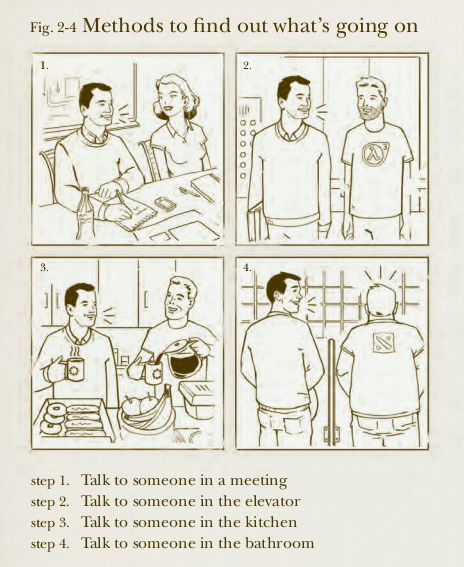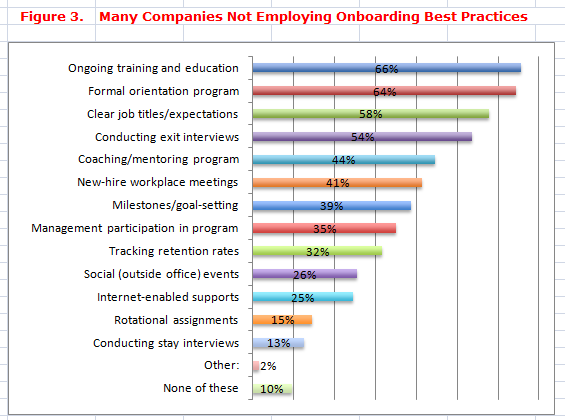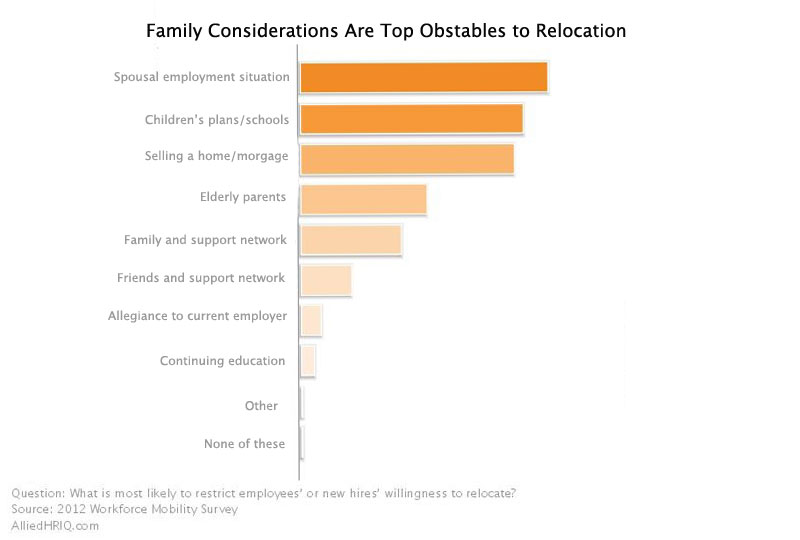Onboarding for the rest of us
Editor’s Note: Today’s post is brought to you by Allied Van Lines, proud sponsor of the “2012 Workforce Mobility Survey”, designed to capture the voice of HR on topics related to workforce mobility. Allied has more than 75 years of experience in corporate, household and international relocation.)
-----------------------------------------------------------------------------------
It's kind of fun at times, particularly if you are like most of us and are grinding it out in one of the thousands of mainstream, solid, and mostly anonymous organizations that quite honestly are most organizations, to read about the wild people practices and processes from Silicon Valley, or startup land, or any company that is young enough or successful enough to just do things differently. You know what I mean, famous places like Google or Zappos, or even less famous but still interesting places like the video game development company Valve, whose recent, irreverent employee handbook was leaked to the internet. If you missed the story about Valve it is worth a quick look, it is a written testament of sorts to that wild, loose, carefree, and unstructured work environment that most of us only dream of inhabiting. Onboarding at Valve
Onboarding at Valve
But we know that most of us can't act like Zappos or Valve, even if we wanted to. We have more history, more culture, more of a need or requirement, (for better or worse), to have more structure, rules, and process around our people management practices. We, and most of our employees and new hires, would fail if we simply set them loose in the organization and told them to figure it out for themselves.
But instead of looking at that reality as a negative, I think there are opportunities to leverage more formal and expected processes as a strength. Take new employee onboarding for example, an area typically well-defined and with a structured process, but also one that may not be producing the desired results in driving faster time to productivity, cementing the relationship between employer and employee, and ensuring a continuing supply of fresh talent in the organization. If you are like most employers, you say you already 'do' onboarding, i.e., collect the requisite forms, conduct an intake or orientation, offer some opportunity for the new hires to acclimate to culture, process, and work styles.
But like any long-term, long-time, been-doing-it-so-long that you think you know how to handle it, there are probably some opportunities for you to improve your game. Thanks to the Workforce Mobility Survey (details here) sponsored by Allied, we've got some actual data about the state of onboarding, and some insights into what the companies that are best in class are doing, (and notably not doing), in the more important than we like to think area of onboarding.
The chart on the right gives the rundown of what survey respondents are employing in onboarding, and Souce - Allied Workforce Mobility Survey since you are probably like most, and already handling the essentials, it is probably a better idea to take a look deeper into the chart, (and certainly at the complete survey results here), to look for areas where you can raise your game. Maybe it is more social events where new hires get to mix with veterans and company leaders or perhaps setting more concrete goals for the program, or it might be getting more senior level management stake in the game.
Souce - Allied Workforce Mobility Survey since you are probably like most, and already handling the essentials, it is probably a better idea to take a look deeper into the chart, (and certainly at the complete survey results here), to look for areas where you can raise your game. Maybe it is more social events where new hires get to mix with veterans and company leaders or perhaps setting more concrete goals for the program, or it might be getting more senior level management stake in the game.
Either way I think the lesson to take away is that you can still add value and make an important impact in the success of the organization while still being your boring, traditional self. Sort of. The key is doing what makes sense for your organization, resonates with the people you are bringing in to the team, and connects them with their peers, managers, and the mission of the organization overall.
And sure, making it a little bit fun probably won't hurt.
-----------------------------------------------------------------------------------
If you would like to learn more about Allied Van Lines, please check out their website or blog. And if you would like to get more information from the Workforce Mobility Survey, you can click here. It’s definitely worth checking out.

 Steve
Steve



